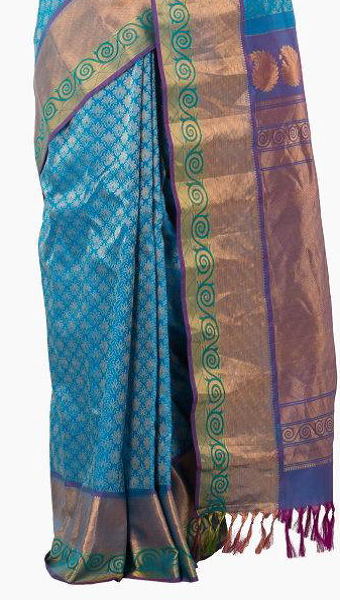Gadwal Saree
Background
Gadwal sarees are produced in Godwal and surrounding areas, in the District of Mehabubnagar in Telangana. Gadwal, 200 Kilometers from Hyderabad City, is very near to the banks of the Krishna River.

The origin of Gadwal Sarees can be traced back to about 200 years ago. At that point of time the Gadwal was the capital of a small Kingdom, locally called as a “Samasthanam”. The Maharani of the said Kingdom namely ‘Adhi Lakshmi Devamma’ promoted the craft with help of a few weavers who had come to Gadwal from various costal areas. Initially Gadwal Sarees were called as ‘Mathiampeta’.
Material used
The raw material used in the production of Gadwal Sarees is silk and cotton along with zari. Cotton yarn is used, in the warp and weft in the body, whereas silk yarn is used in the warp and weft in pallu and border. However, there are other combinations being used presently by the weavers.
Technique applied
Throw shuttle pit/frame looms are used for weaving Gadwal Sarees. These looms may or may not be fitted with a Jacquard or dobby. For weaving of simple design, dobby is used where for complex designing jacquards upto 480 hooks are used. Three shuttles, one for body weft and two for border weft are used. This type of weaving requires high skill.
How to distinguish genuine Gadwal Sarees
- The unique feature of Gadwal Sarees lies in the interlockings or joints during weaving. There are two joints, one is called the vertical joint or vertical interlocking of the body of the saree with the border. The second joint is the horizontal joint or horizontal interlocking of the body of the saree with the pallu.
- The body of the saree is made of cotton threads whereas border and pallu are made of silk threads.
Source : Indian Handloom Brand
Last Modified : 9/5/2023
This topic provides information about Pochhampally...
This topic provides information about Arni Silk Sa...
This topic provides information about Venkatagiri ...
This topic provides information about Tussar Gichh...
